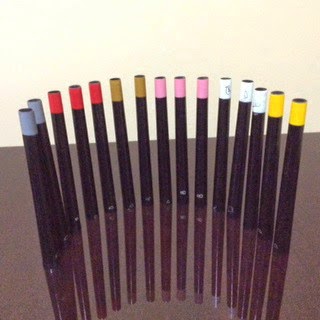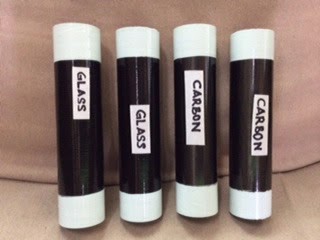 |
| Basket Type Hydro |
Water removal from textile packages is again dependent upon the moistre regain and the abosorption properties of the yarn. In case of polyester, it can be 90% moistre removal and in case of cotton, it can be only 50% and viscose only 30%.
The interesting part of this technology was the mathematics, which shows the moistre removal rate and percentage of residual moistre.
Centrifugal Acceleration Governs The Rate Of Water Removal From Porous Package,
This Also Defines When The Equilibrium Stage
Is Reached Between Surface Tension And Centrifugal Forces
The Governing Equation
C= 4o(2)f (2) r
Where f is the frequency of rotation of centrifuge
Within Bracket shows, to the power of the preceeding symbol
Variation of Centrifugal Acceleration is Cause For Terminal Retention of Water in a Package
Retention is Time Dependent : Water before escaping from Package should Move Through It To Outside Surface
Rate of Movement Depends Upon
Balance Between Viscous Flow Forces
And
Accelerating Centrifugal Force And Restraining Capillary Forces
Large Capillaries Empty First and Small Capillaries Empty With Difficulty
The Mass of Retention In Capillary is Given By the Equation
Ahs = ltCosq / C
Where A is the Area of capillary, l the peripheral length of capillary, h the height to which the capillary is filled with water, s is viscosity of the liquid, t , the surface tension and q the contact angle, C , the centrifuge acceleration.
Hence Mass Retention is Inversely Proportional To Centrifuge Acceleration
As C is increased, more capillaries opened and a stage is reached, when capillary retention is proportional to 1/ C
At any point in the Package, the rate of Movement of Moisture (u) in a centrifugal gravitation force (C)
Is Given By u = CK
Where K is the Permeability of the package
This is the maximum amount of water, that can be removed by Centrifugal Field Against Capillary Forces
In case of Cotton, it is 45%
Polyester Textured , it is 90 to 94%
Acrylic : 90%
Nylon : 90%
Viscose : 30%
Polyester Sewing Thread : 90%
Based on the Above Numbers, it is now possible to Calculate the Spinning Time To Achieve the Equilibrium Stage For Hydro with speed variable.
Conclusion For Basket Hydroextractors
During Hydroextraction, water migrates from the Porous Package In Direction of Centrifugal Field. Rate of movement depending mainly on the Porous Structure of the Package, the water retention and the field strength.
As larger pores empty, retention reduces and rate of flow declines until balance is reached when capillary forces retain moisture within the material against the influence of the centrifugal forces.
As per Theory, the Porosity of Package and Pore Size Distribution is an important element of Hydro-extractors. Current Hydro-extraction system does not provide the element of squeezing the water initially out of the package and creating enough porosity within the package for easy removal of water.
Axis Type Hydroextractor
Unlike Basket Hydro , where at the Radial End of Basket, the Packages move with Basket.
The Axis Spinning spins the Packages on its own Axis.
In Basket Hydro, the Effect of variation of Centrifugal Field was insignificant for Moisture Retention.
In Axial Spinning, the centrifugal acceleration depends upon the spinning speed and also depends upon the size of the package.
Larger the Package, Greater The Acceleration
Maximum Acceleration At Outside
Cmax = 4p(2)f(2)R0
Where f is freq. of rev, R0 is OD of Package
Within Bracket shows to the Power of Pie or f
Where as the Average Acceleration within the package is given by
Cav = Cmax 2/3 ( R1/R0 + R0/ R1+R0)
Where R1 is the ID of package
As OD of Package Increases, Avg and Max acceleration Increase for a Given Speed
Acceleration Increases as Rate of Rotation Increases
But interestingly from the equation, as OD increases, the Cav reduces and hence the Water Retention in Packages Become Higher
Technically, one would expect that Retention Of Moisture In Axis spinning packages should be lower then Basket Hydro
But In Real Life Experiments it was seen that the Small Packages Dried
More Then Large Packages exactly following the equation
This is explained as below
Moisture Is Distributed Evenly Through The Package
High Retention Zone Occurs At Outside Surface,
Most Remote From Centrifugal Axis
Spot The Large Molecules At The End Of Package after Hydroextaction
Caused By Migrating Molecules To End Of Package Under Centrifugal Field
But Unable To Escape On Account of Surface Tension Forces
 |
| Result is Crooked Packages |
For Same Value Of Cmax , effect of each zone retention on overall retention of moisture will be Proportional to
Package Circumference / Cross Sectional Area
That is
R0/ C ( R0 (2) - R1(2))
Retained Water can be Divided Into Two Parts
That Dispersed Throughout the Porus Material
That Held At Or Near The Outside Surface
Rate Of Equilibrium In This Case Depends Upon
Porous Structure
Field Strength Within Package
Conclusion
Axis Type Hydroextractor Has A Major Shortcoming In Fluid Separation From Textile Material
Correction To System
It was First Done By Dr Frauchiger in Switzerland
Who Designed Package Holding And Pressing To Break The Boundary Layer And Break the Surface Tension to allow the large molecules removal.
 |
| Hydro with Fingers |
 |
| Optimal Hydro,Compliant with Technology. |
In short, the Axis type Hydro has a major shortcoming and gives oval shaped packages. Yet is the most popular hydro sold in the world , because of its productivity.
The Dr Frauchiger hydro also has a high productivity, but extremely expensive machine, but worth the investment.








